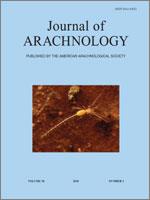Phoneutria is one of the most medically important spider genera; however, its ecology is poorly known. In Amazonian upland rainforests, there are two sympatric species of the genus Phoneutria, P. reidyi (F.O. Pickard-Cambridge 1897) and P. fera Perty 1833. For 15 months we collected data on the spatial distribution, use of habitat (activity on the ground or vegetation) and temporal changes in body size structure in a forest reserve near Manaus city in three distinct habitats: dense forest, located on the plateaus on yellow latossol; swamp forest, located in the valleys; and heath forest or “campinarana,” on dry white sand soil in the Reserva Florestal Ducke. A total of 239 P. reidyi and 239 P. fera were captured in nocturnal searches during their period of activity. There were significant differences between the two species: 1) P. reidyi existed in higher abundance in the swamp forest than in the dense forest areas and was almost absent in the heath forest, while P. fera existed in similar abundance in the three habitats. 2) During their development, members of both species used the vegetation as an area of activity, but the subadults and adults of P. reidyi were less often found on the ground than the subadults and adults of P. fera. 3) P. reidyi more frequently used small or acaulescent palms as a substrate, and its abundance was directly related to the abundance of these palms, independent of the habitat, while P. fera did not show such relationship. 4) There was a strong temporal variation in the body size structure of the P. reidyi population indicating seasonal reproduction, but there was no evidence of seasonal reproduction by P. fera. We suggest that the differences in the use of habitat and in the seasonality of reproduction are related to the avoidance of intraguild predation between these species.
How to translate text using browser tools
1 December 2010
Patterns of abundance, habitat use and body size structure of Phoneutria reidyi and P. fera (Araneae: Ctenidae) in a Central Amazonian rainforest
Martha Patricia Torres–Sánchez,
Thierry Ray Gasnier
ACCESS THE FULL ARTICLE

The Journal of Arachnology
Vol. 38 • No. 3
December 2010
Vol. 38 • No. 3
December 2010
“banana-spider,” coexistence
AMAZON
life cycle
microhabitat preferences
wandering spiders




